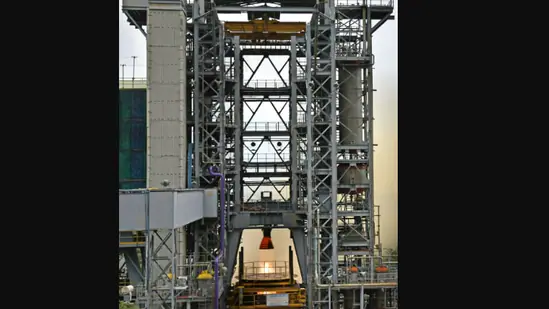Science
ISRO Prepares for First Test Vehicle Mission in Gaganyaan Program

In a significant development, the Indian Space Research Organisation (ISRO) is gearing up to launch the maiden test vehicle mission for India’s ambitious human spaceflight program, Gaganyaan. The mission, known as TV-D1, is set to take place within the next month or two, marking a crucial step in India’s pursuit of sending astronauts into space.
The primary objective of this test vehicle mission is to validate the crew escape system, a critical safety component of the Gaganyaan program. Officials at the Bengaluru-based space agency have outlined a roadmap for the Gaganyaan program, which includes a series of missions to ensure the safety and success of India’s maiden human spaceflight venture.
Following the TV-D1 mission, ISRO plans to launch the TV-D2 mission and the first uncrewed mission of Gaganyaan, designated as LVM3-G1. Subsequently, the program will progress to a second series of test vehicle missions (TV-D3 & D4) and the LVM3-G2 mission, which will carry a robotic payload.
The fate of the crewed mission, where Indian astronauts will venture into space, will be contingent on the outcomes of these preceding test vehicle and uncrewed missions, according to ISRO officials.
The Gaganyaan project aims to demonstrate India’s capability to transport a crew of two to three members to a circular orbit approximately 400 kilometers above Earth’s surface for a mission lasting one to three days. The safe return of astronauts to Earth, with a designated landing location in Indian sea waters, is a key objective of the program.
For the Gaganyaan mission, ISRO has designated its LVM3 rocket, a heavy lift launcher, which has undergone substantial modifications to meet human rating requirements. This human-rated version is known as the Human Rated LVM3 (HLVM3). Ensuring the safety of astronauts, HLVM3 is equipped with a Crew Escape System (CES) powered by high-burn-rate solid motors. This system is designed to swiftly transport the Crew Module (CM) and its occupants to a safe distance in the event of an emergency, whether on the launch pad or during the ascent phase.
The Orbital Module (OM) will orbit the Earth and consists of the Crew Module and the Service Module (SM). The CM provides a habitable space with Earth-like conditions for the crew, featuring essential systems for life support, avionics, and deceleration during re-entry. The SM offers support to the CM in orbit and houses crucial systems such as thermal control, propulsion, and power.
The upcoming test vehicle mission, TV-D1, marks a significant milestone for ISRO and India’s aspirations in human spaceflight. It underscores India’s commitment to ensuring the safety and success of future crewed missions as the nation continues to make strides in space exploration.







